The weather was beautiful for traveling. Not until the afternoon did the temperature start to climb, needing the air conditioner for awhile. We were definitely glad we were heading north, due to construction on the southbound side, traffic was backed up for several miles.
Carol and I noticed all the trucks that were stuck in the traffic, and none were Walmart trucks. You would have thunk there would be some, considering Arkansas is home for Walmart.As has been our fortune, construction lies in wait for us around every corner. Getting to the campground we had to wrestle with construction coming off the freeway, and further up the surface street we were headed on. Anyway, we made it.
There was a little confusion getting to our site. When I made the reservation I chose site "A08". When we arrived, there was another RV in that site, plus the location didn't match where I chose. To shorten the story a bit, the online map has incorrect site numbers. Our site should have been "A8".
You're probably thinking, what's the difference? This Corp of Engineers (C.o.E.) campground has a section for people requiring extended stay due to medical situations. "A08" is the medical extended stay sites, "A8" is for the rest of us RVers.
Again, like most C.o.E. campgrounds, they are near water. Here we are a couple rows off the water.
After we settled in, and had dinner, Carol and I took a little walk around the park. As you can see there is a lot of open area to enjoy. The campground is broken down into areas, we liked area "B" for our next visit, most of the sites are close to the water. Another area has sites set up for group camping. We briskly walked back to the trailer, the wind kicked up off the water, and it got chilly quick.Back home. The view out my window isn't too bad at all.
Riverfront property without the high price tag.There a few things to see in the area. In Hot Springs there is a museum showcasing the history of gangsters and the hot springs. A short drive up to Little Rock for a visit to a couple museums.
Hot Springs was an interesting place to visit, lots of history. They are best known for three things... hot springs with healing properties, gambling, and gangsters.
The history of the area began way back in the 1800s when the new national territory was explored. William Dunbar and George Hunter found huts near steaming springs. They were told of people coming to the springs for their health and wellness. When the word spread about this region, Congress in 1832, set aside a four-square-mile reservation to protect the area for public use. As human nature would have it, settlers came to the area, ignoring the governments claims to the land, setting up homesteads, offering amenities to travelers. It all came to a head around 1876 when the Supreme Court ruled against the private land claims, and declared the springs were open to all. The first structures were wooden Victorian design. Unfortunately wood structures did not fare well with the steam and moisture from the springs. The row today are the reconstructed bathhouses, just as ornate as the original buildings.
The Lamar was a unique facility, it offered different size bath tubs to accommodate the big and tall patrons as well as the regular ones. The current building was constructed in 1923, and was named after a Supreme Court justice. The bathhouse closed down in 1985.The Buckstaff bathhouse was constructed in 1912, and is still operational today. Obviously there was no touring the facility unless one is planning a spa treatment.No, the gentlemen wrapped up are not dead, they came out of the steam chambers located behind them. The water comes from 47 hot springs located on the slopes of Hot Springs Mountain. The water maintains an average 143 degrees, with a flow rate average of 700,000 gallons a day. The bathhouse cools the mineral water down 100 degrees.The Quapaw was built in 1922, named in respect of the Quapaw tribe that lived in the region. The current bathhouse was constructed on the site of two burned bathhouses, the Horseshoe and Magnesia.One of the few bathhouses open to the black in the 1800s was the Ozark.
This is the Ozark in 1882.Ozark today.
The federal government began regulating the bathhouses and took an active role in improvements that led to better sanitation conditions. One thing the federal government could not control was who could use the bathhouses. In 1880 the federal government bowed to state government, requiring racial segregation. The black business owners stepped up and built elaborate bathhouses nearby, and provided facilities to the black community until desegregation in 1960s.
What you might expect to see inside a spa.
The bathhouses were for the affluent folk... that is most of them. There was a government free bathhouse for the folks without bags of money. Some folks falsified their income status just so they could use the government free facilities.
During the Civil War era veterans would come to the springs for health and wellness. Congress was approached, requesting that a military hospital be built at the springs. Funding was provided and the Army and Navy were provided a parcel of land to built the hospital.
The bottom photo was taken from the Grand Promenade, as you can see, it was a huge hospital for its time. In its later life the building was home to a technical trades school for students who were not interested in the standard school curriculum. Today the building stands empty due to lack of funding to support the program.For more information try this website: https://www.nps.gov/hosp/index.htm
There is a beautiful grand promenade behind the bathhouses that meanders for about a half mile, and at one end are hot spring pools.
A lot of those folks that enjoyed the bathhouses were gangsters, as well as the affluent. Hot Springs was a town where gangsters could come and relax, without the fear of being accosted by the police.
When the gangsters were in town to relax, they liked to stay at the Arlington Hotel.
Al Capone stayed in room 443. This was his favorite room, excuse me, suite provided him an escape route where he could leave without being seen. "Lucky" Luciano had a room that looked down at the two cross streets.Ya see, while drinking, gambling, and ladies of the evening were all illegal, the law enforcement seemed to turn a blind eye, and deaf ear to it. Some of the payoffs went all the way to the Governor. I bring this up because one of the places to stop and visit is the Gangster Museum.
The museum is a guided tour that takes about an hour, depending on how many questions are asked. The guide was an entertaining gentleman that expands on the videos shown in each room. The museum is actually more directed to how gangsters and ball players shaped the town.
Some of the biggest gangsters were the politicians holding office. Other lesser known folks were Al Capone, Bugsy Sigel, Bonnie and Clyde, and many others. Gangsters and law enforcement rubbed elbows together quite a bit in the 20s, 30s, and 40s.
No, these are not currently on any wanted posters... but who knows?While it was illegal to buy alcohol, it was legal to drink alcohol... if you had a prescription from a doctor.
They look pretty official, don't they? The medicinal alcohol was prescribed "as needed".This was just one of the brands prescribed as "medicinal".Capone loved the area, bought a dairy farm, and settled down; part of this statement was true... he did buy a dairy farm. What he did was change out the product he produced.
Did I mention that there was a company that bottled water for water coolers? Wellllll... Capone figured out, with the help of Joe Kennedy (JFK's dad), how to make clear liquor.
The water bottling company had their logo on their bottles stamped on upside down, so when the bottles were put atop the water cooler, the logo would be right side up. Capone used the same bottle manufacturer, but he had the logo stamped on right side up, so that when it was put in a holder, the logo would be upside down. The reason this was important you ask... well he used train cars with the water company logo, and shipped nationwide. This meant that the liquor, stored by the water, could be easily identified.
Come the 1960s a gentleman named Rockefeller ran for the Mayor's office, lost the first time, successful for the second time. He managed to shut down the gambling. Some of the original gaming equipment is displayed in the museum.
I mentioned baseball earlier. Back in the 20s and 30s many major league and Negro league teams came to Hot Springs to conduct "spring training". Team management believed that the mineral water cleansed the toxins from the player's bodies, and help prepare them for the regular season.
I'm not sure which toxins they might have thought they were cleansing them of, considering the fact the players were enjoying the same pleasures as the rest of the people. Many of the players could be seen shoulder to shoulder with the affluent and the gangster class in the bars and casinos.
You can learn more about the museum at: http://www.tgmoa.com/.
After a fun filled day we returned back home.
The next day we took a drive into Little Rock and hit a couple of museums. The first museum was Historic Arkansas Museums (historicarkansa.org). Again COVIDS strikes. We were able to wander around the outer structures, but could not go inside. We did not let that stop us, we went to plan "B", take pictures through the windows.
Our first stop was the Hinderliter Grog House. A two story structure with rooms on the top floor, and the tavern on the first floor. This building is the oldest standing building in Little Rock, dating to the 1820s. It was a hub for trappers to travelers. It started out as a log structure, prior to the Civil War it was covered with clapboard.
Upstairs rooms for rent.The "social area", better known as the tavern.Next we stepped over to the Brownlee kitchen/slave quarters.
And we think we are lacking when our kitchens don't come with a dishwasher and microwave. We didn't take a picture of the main house (oops). The Brownlee homestead was built in the late 1840s.The Vicar's house.
Kinda like living in a 350 sq. ft. trailer, except we have an inside bathroom, and don't have to go outside to get water. There were many other building, but only to look at from the outside. The gardens on the grounds were planted in memory of the people buried on this location, many were women and children, most without names.After a walk around the grounds we visited the inside exhibits. One of the areas that kept my interest was the display of quilts.
Circa 1838; it is pieced and appliqued. The family story is that it was made by a slave owned by the Lindsey family. The quilt was to be a wedding gift to Rebecca and Caleb Lindsey Jr., upon their marriage in 1838.Circa 1880; pieced. The maker of this quilt was the family dressmaker of the prominent Rose family of Little Rock. It was made from formal garments the dressmaker had sewn for the family members.Circa 1860; pieced and appliqued. This quilt was titled "Star of Bethlehem". It was the tradition in the Vincent family for the mother of the baby, to christened it with a quilt. Mary Jane Vincent finished this quilt the night her son was born.Circa 1861; pieced with trapunto. This quilt was actually made to raise funds to help Confederate soldiers in need. This quilt was also a political statement. The nine white stars on the blue field indicated that Arkansas was the ninth state to secede from the Union. When the Union Army heard what Mrs. McPherson did, they put her under house arrest until the end of the war. For those wondering what "trapunto" is... it is an ornamental technique used to create depth. The stars were stuffed to give them a 3D effect.There was still more to see... upstairs. Another exiting display was waiting, The Native American Gallery. I love reading and seeing history on the Native American tribes that roamed our lands. I feel they were improperly treated, generally because of greedy desires of the white man. This exhibit highlighted the Caddo, Osage, and Quapaw tribes.
I am just going to show you some of their tribal culture.
Turtle shell leggings used in "Stomp Dances".
Dush-tuh with hair combs, and a Dance Bustle
Beaded Dance Bustle and a Dance Club.Local pottery circa 1200-1500AD.
Tell me the Native American Indians don't have something to offer.
We left the truck parked at this museum and walked over to the next museum, The Old State House Museum. Visit their website at: www.oldstatehouse.com.
The best place to start this tour is watching the video about what it took to get the building back in shape; they actually found a lot of things they didn't realize were lost.
This museum is about the growth of the Arkansas state government from its infancy as a territory to statehood, with a "Rabbit Hole". This building has been through a lot since it was first built. During construction in the 1830s, only the House of Representatives occupied it. During the Civil War, the Union captured it and occupied it. At one point it was home for a variety renters, one being the Arkansas School of Medicine.
One particularly interesting section is "Down the Rabbit Hole". This area is an eclectic exhibit.
This Soap Box Derby car, jersey, and trophy from the 1960 competition. Wally Waits designed and drove his car to victory in the state championships. Wally represented Arkansas in 1960 in Akron Ohio, where he finished 8th in the finals.We can't get away from liquor, here is the business bootleggers way to transport his wares.
While the bootleggers were running their stuff, the artists/cartoonists were having fun too.A 1930 painting of Herbert Hoover as a butcher in a Washington deli.Here's one to ponder on, I have no clue what it is.
If you are truly curious, you can find out by going online:There is more to see, but I encourage you to visit their website.
From the Old State House Carol and I went to lunch, then to take a walk across a bridge in a park near our campground. The park was Twin River Park, so we drove there and started walking, but the bridge was not in sight. We stopped a jogger and asked him how to get to the bridge we were looking for. He explained that we should have looked for directions to the Twin Rivers Park BRIDGE. Once we re-directed our goal, it was a fun walk across the bridge to an island in the river. There was another bridge we thought about walking to, but the round trip distance was more than we wanted to do after the five miles we already covered. This second bridge goes over the dam spillway.
We walked a nice loop trail once we crossed over to the island. What is cool about this area is trails going everywhere. From this section of the park there is a trail 4.3 miles to our campground. After our five miles for the day we were happy to get home and relax.Of course getting home to relax was not the immediate option, I needed to prep for departure. It appears we will be leaving with the rain, instead of ahead of it this time.




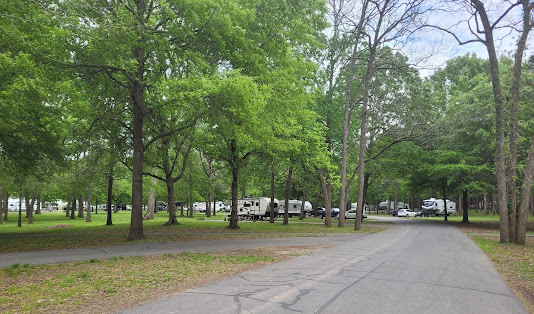
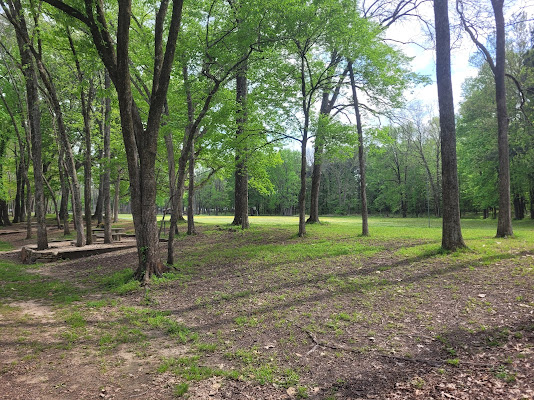



















































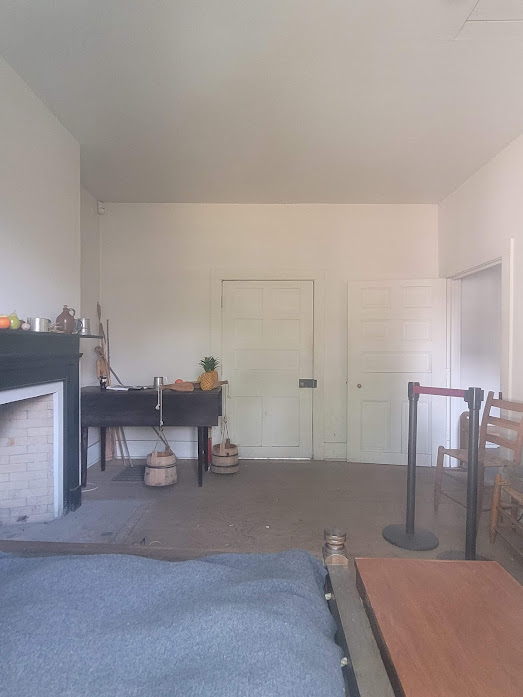


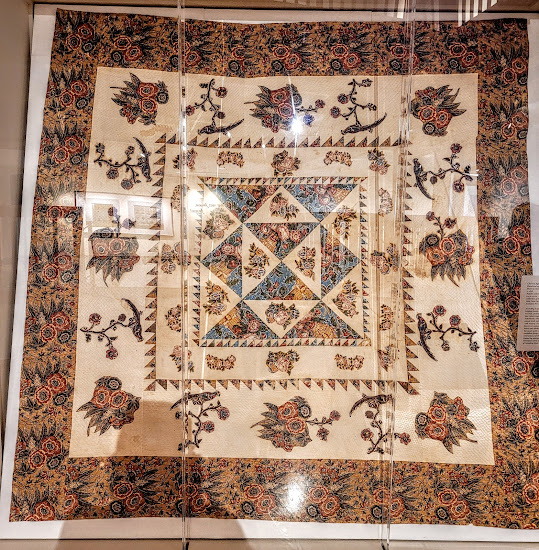









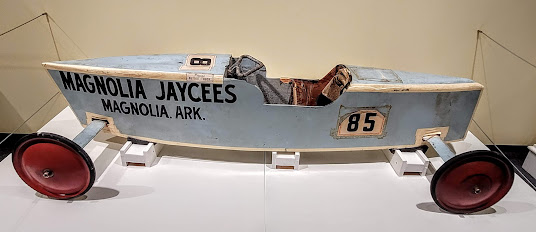







No comments:
Post a Comment